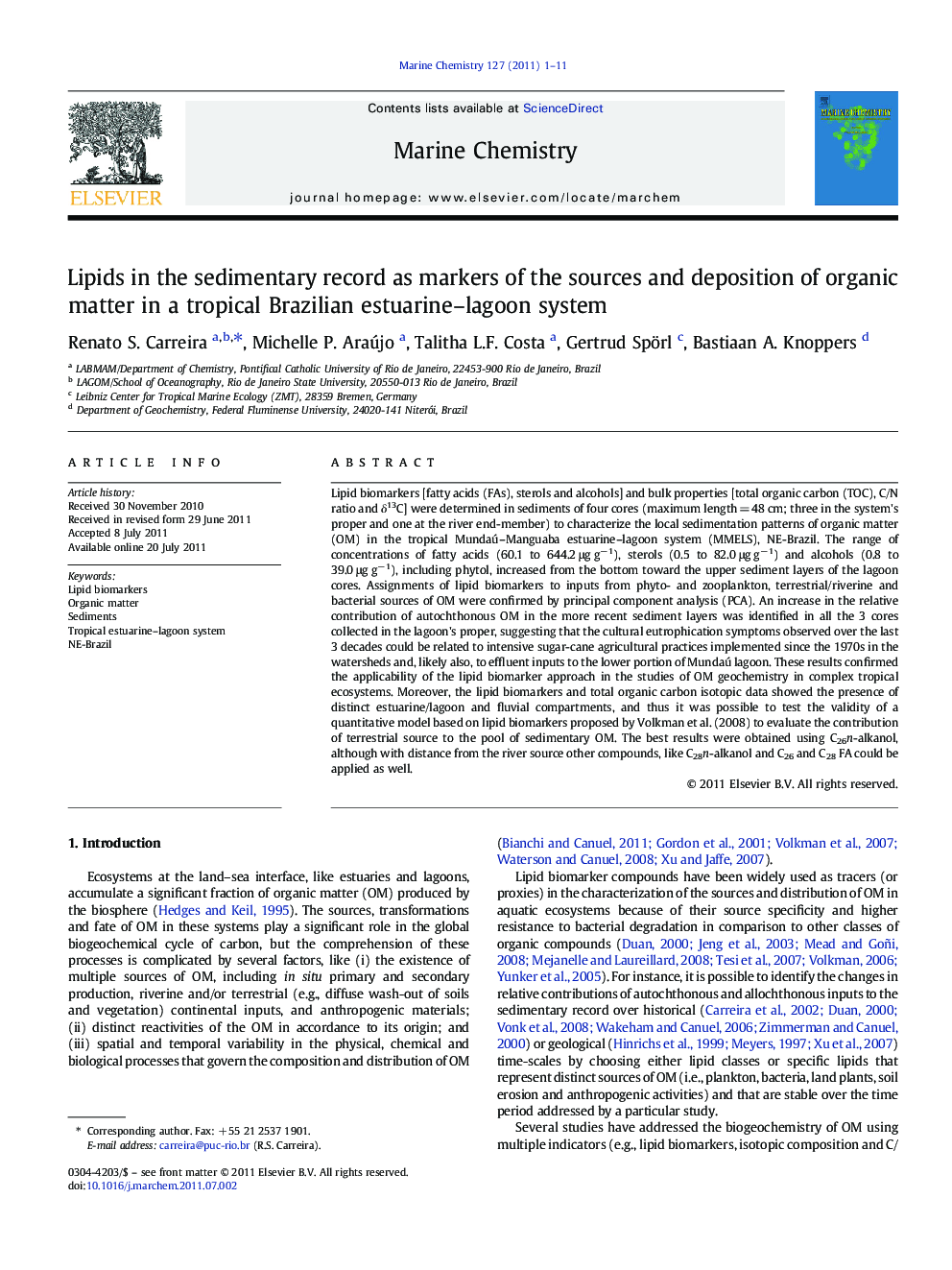| کد مقاله | کد نشریه | سال انتشار | مقاله انگلیسی | نسخه تمام متن |
|---|---|---|---|---|
| 1261475 | 1496697 | 2011 | 11 صفحه PDF | دانلود رایگان |

Lipid biomarkers [fatty acids (FAs), sterols and alcohols] and bulk properties [total organic carbon (TOC), C/N ratio and δ13C] were determined in sediments of four cores (maximum length = 48 cm; three in the system's proper and one at the river end-member) to characterize the local sedimentation patterns of organic matter (OM) in the tropical Mundaú–Manguaba estuarine–lagoon system (MMELS), NE-Brazil. The range of concentrations of fatty acids (60.1 to 644.2 μg g−1), sterols (0.5 to 82.0 μg g−1) and alcohols (0.8 to 39.0 μg g−1), including phytol, increased from the bottom toward the upper sediment layers of the lagoon cores. Assignments of lipid biomarkers to inputs from phyto- and zooplankton, terrestrial/riverine and bacterial sources of OM were confirmed by principal component analysis (PCA). An increase in the relative contribution of autochthonous OM in the more recent sediment layers was identified in all the 3 cores collected in the lagoon's proper, suggesting that the cultural eutrophication symptoms observed over the last 3 decades could be related to intensive sugar-cane agricultural practices implemented since the 1970s in the watersheds and, likely also, to effluent inputs to the lower portion of Mundaú lagoon. These results confirmed the applicability of the lipid biomarker approach in the studies of OM geochemistry in complex tropical ecosystems. Moreover, the lipid biomarkers and total organic carbon isotopic data showed the presence of distinct estuarine/lagoon and fluvial compartments, and thus it was possible to test the validity of a quantitative model based on lipid biomarkers proposed by Volkman et al. (2008) to evaluate the contribution of terrestrial source to the pool of sedimentary OM. The best results were obtained using C26n-alkanol, although with distance from the river source other compounds, like C28n-alkanol and C26 and C28 FA could be applied as well.
► Lipid biomarkers indicated changes of organic matter sources to a tropical system.
► Eutrophication caused an increase in the accumulation of autochthonous organic matter.
► A qualitative model were considered to evaluate the input of terrestrial organic matter.
Journal: Marine Chemistry - Volume 127, Issues 1–4, 20 December 2011, Pages 1–11